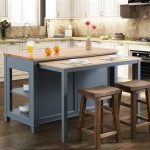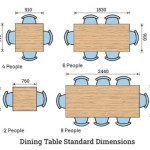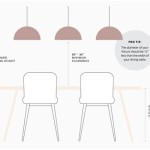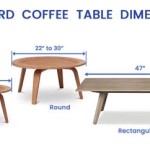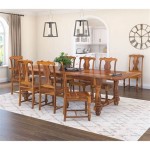Decorative Trays on Coffee Tables: Functionality and Aesthetics United
The coffee table, a central element in living room design, provides an area for daily activities, social gatherings, and aesthetic expression. While its primary function is to serve as a surface for drinks, books, and remotes, the strategic addition of a decorative tray enhances its utility and visual appeal. This article explores the various aspects of incorporating decorative trays on coffee tables, focusing on their practicality, stylistic impact, and the factors to consider when selecting and arranging them.
Decorative trays offer a defined space within the larger coffee table surface. This separation allows for organized storage of frequently used items, preventing clutter and promoting a more curated look. Furthermore, they act as an anchor for decorative arrangements, providing a focal point that draws the eye and contributes to the overall design scheme of the room.
Defining Purpose and Functionality
Before selecting a decorative tray, consider its intended purpose. Is it primarily for organizational purposes, designed to contain remote controls, coasters, and small electronics? Or is it intended to serve as a platform for showcasing decorative objects, such as candles, plants, or art pieces? The answer to this question will significantly influence the size, shape, material, and style of the tray.
For organizational purposes, a tray with raised edges is ideal. These edges prevent items from sliding off the tray and creating a mess. Materials like wood, metal, or durable plastic are suitable choices, as they can withstand daily use and are easy to clean. The size should be proportionate to the coffee table, allowing ample space for other items to be placed around it.
If the tray's primary function is decorative, more emphasis can be placed on aesthetic considerations. Materials like mirrored glass, marble, or intricately patterned ceramic can add a touch of elegance and sophistication. The shape can be more unconventional, such as circular, oval, or asymmetrical, to create visual interest. The size should be chosen to accommodate the intended decorative objects, allowing them to be displayed effectively without overcrowding the tray.
The depth of the tray is another factor to consider. A shallow tray is suitable for displaying flat objects, such as books or magazines, while a deeper tray can accommodate taller items, such as vases or candle holders. Consider the height of surrounding furniture when selecting the depth of the tray, ensuring that it does not obstruct the view or feel disproportionate to the overall design.
The placement of the tray on the coffee table also affects its functionality. A tray placed in the center of the table creates a focal point and defines the central space. A tray placed off-center can create a more dynamic and asymmetrical arrangement. Consider the flow of traffic around the coffee table and positioning the tray in a way that does not impede movement or usability.
Exploring Material and Style Options
The choice of material and style significantly impacts the overall aesthetic of the coffee table and the living room as a whole. The decorative tray should complement the existing furniture, décor, and color palette to create a cohesive and harmonious look. Numerous options are available, catering to various design preferences.
Wood Trays: Offer a warm and natural aesthetic, suitable for rustic, farmhouse, or Scandinavian-inspired interiors. Different types of wood, such as oak, walnut, or acacia, offer varying tones and textures. A wooden tray can be stained or painted to match the existing furniture, or left natural to showcase the wood grain. Wooden trays often lend themselves to a more casual and relaxed feel.
Metal Trays: Provide a sleek and modern look, ideal for contemporary or minimalist interiors. Materials like stainless steel, brass, or copper offer different levels of shine and warmth. Metal trays are durable and easy to clean, making them a practical choice for everyday use. They also offer a sophisticated contrast to softer textures, such as upholstered furniture or woven rugs.
Glass Trays: Can add a touch of elegance and glamour to a coffee table. Mirrored glass reflects light and creates a sense of spaciousness, while tinted glass adds depth and sophistication. Glass trays are often paired with metallic accents, such as gold or silver, to enhance their luxurious appeal. They are particularly well-suited for displaying decorative objects, allowing their colors and textures to shine through.
Ceramic Trays: Offer a wide range of patterns, colors, and textures. From simple and understated designs to intricate and ornate creations, ceramic trays can complement a variety of interior styles. They are particularly well-suited for adding a pop of color or personality to a neutral space. Ceramic trays can also be used to showcase collections of small objects, such as seashells, stones, or miniature figurines.
Woven Trays: Bring a natural and organic feel to the coffee table. Materials like rattan, wicker, or seagrass offer different textures and patterns. Woven trays are ideal for creating a relaxed and bohemian atmosphere. They are often paired with plants, candles, and other natural elements to enhance their earthy appeal.
The style of the tray should also complement the overall design scheme of the room. A minimalist interior benefits from a simple and uncluttered tray, while a more maximalist interior can accommodate a more elaborate and decorative tray. Consider the shape, size, and detailing of the tray, ensuring that it harmonizes with the existing furniture and décor.
Consider the finishes when choosing the material for the tray. A matte finish offers a subtle and understated look, while a glossy finish adds shine and glamour. The choice of finish should depend on the overall style of the room and the desired level of formality. A distressed finish can add character and charm to a vintage-inspired interior, while a polished finish offers a more modern and sophisticated look.
Arranging and Styling the Decorative Tray
The arrangement of items within the decorative tray is crucial for creating a visually appealing and balanced display. The goal is to create a focal point that draws the eye and complements the overall design of the room. Several principles of design can be applied to achieve this effect.
Varying Height and Scale: Incorporating items of different heights and scales creates visual interest and prevents the arrangement from feeling flat. A tall vase can be paired with shorter candles or decorative objects to create a dynamic composition. The tallest item should be placed towards the back of the tray, allowing the shorter items to be seen in front.
Creating Layers: Layering different textures and materials adds depth and complexity to the arrangement. A stack of books can be used as a base for smaller decorative objects. A textured throw blanket can be draped over the edge of the tray to add a soft and inviting touch. Consider using different colors and patterns to create visual contrast.
Adding Greenery: Plants can add a touch of life and freshness to the coffee table. A small potted plant, a succulent, or a few sprigs of greenery can create a focal point and enhance the overall aesthetic. Plants also help to soften the hard edges of the tray and other furniture, creating a more inviting and relaxing atmosphere.
Incorporating Personal Touches: Adding personal items, such as photographs, souvenirs, or small collections, can make the coffee table feel more unique and personal. These items should be carefully curated and arranged in a way that complements the overall design. Avoid overcrowding the tray with too many personal items, as this can create a cluttered and disorganized look.
Using Color Coordination: Coordinating the colors of the items within the tray with the overall color palette of the room can create a cohesive and harmonious look. Choose items that complement the existing furniture, décor, and artwork. Use color to create focal points and add visual interest. Consider using a color wheel to select complementary or analogous colors.
Balancing Symmetry and Asymmetry: A symmetrical arrangement creates a sense of order and formality, while an asymmetrical arrangement creates a more dynamic and informal look. The choice between symmetry and asymmetry depends on the overall style of the room and the desired level of formality. A symmetrical arrangement is often suitable for traditional or formal interiors, while an asymmetrical arrangement is better suited for modern or eclectic interiors.
Leaving Negative Space: Leaving some empty space within the tray is important for preventing clutter and creating a sense of balance. Negative space allows the individual items to stand out and be appreciated. Avoid filling the tray with too many items, as this can make it feel overcrowded and overwhelming.
By considering these factors and applying basic principles of design, a decorative tray can be transformed into a stylish and functional addition to the coffee table, enhancing the overall aesthetic of the living room.

Coffee Table Tray Farmhouse Decor Ottoman Boho Free Shipping

Decorative Boxes Trays Coffee Table Pottery Barn

How To Style Decorate A Coffee Table With Tray Shabbyfufu Com

One Room Challenge Wood Valances Citygirl Meets Farmboy

How To Style A Coffee Table Tray For Spring Casa Watkins Living

Hanobe Round Wood Decorative Tray Rustic Serving Trays Farmhouse For Coffee Table Home Decor

Large Tray Decorative Coffee Table Kitchen Gift Preorder Etsy

Home Decor Under 50 Chronicles Of Frivolity

Ottoman Tray Oversized Coffee Table Tea Catch All Living Room Home Decor Etsy

How To Style Decorate A Coffee Table With Tray Shabbyfufu Com

